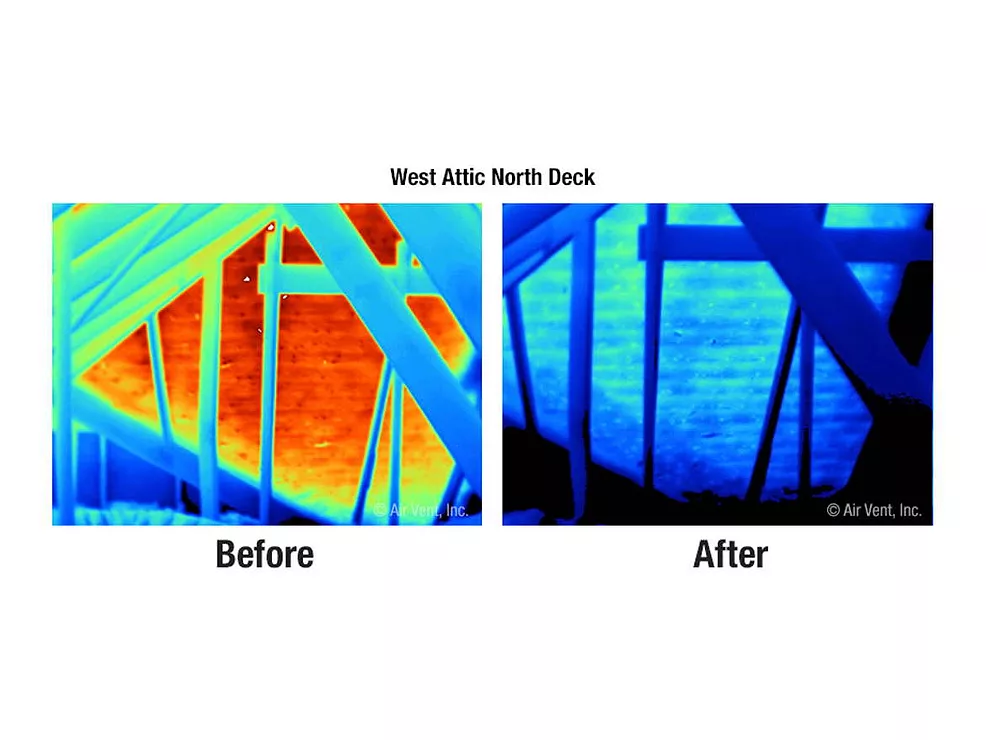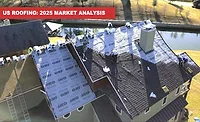Technology
LuminX Is Latest AI Seeking To ‘Revolutionize’ Supply Ops
Adoption of AI technology is the new frontier in management, logistics and revenue generation

A surge in artificial intelligence adoption is reshaping logistics and supply chains for building materials. LuminX is the latest AI-tech firm seeking ways to save costs and improve forecast accuracy. AI-driven tools are helping suppliers and distributors gain efficiency and visibility across operations.
— Image courtesy of LuminX
LuminX, a San Francisco–based AI startup, announced today that it has raised $5.5 million in seed funding to accelerate the development and deployment of its solutions for the logistics and warehousing industries.
The seed round was led by 1Sharpe, GTMFund, 9Yards, Chingona Ventures, and the Bond Fund, with participation from previous investors in Voxel and early LuminX customers.
The tech firm aims to tackle inefficiencies in supply chain and warehouse management that often lead to higher operational costs and errors, the company said in its announcement, by deploying Vision Language Models (VLMs) on low-cost mobile hardware.
LuminX’s co-founders, CEO Alex Kaveh Senemar and CTO Reza Javanmardi, stated that they aim to address these chronic operations inefficiencies by deploying VLMs on edge-mounted cameras and hardware throughout the warehouse.
"This pivotal funding allows us to scale our next-generation AI models, transforming how warehouses operate," Senemar said in a statement.
 LuminX founders Alex Kaveh Senemar and Reza Mamrez Javanmardi.
LuminX founders Alex Kaveh Senemar and Reza Mamrez Javanmardi."Our edge-based vision language models represent a massive step forward, acting as an intelligent core for warehouse operations,” he added. “They deliver new levels of automation and insight, helping to turn previously opaque processes into transparent, highly efficient systems."
AI Adoption Gains Momentum
Until now, many supply-chain AI solutions have required centralized servers and complex integration, which has limited their adoption among mid-market distributors and their suppliers.
By embedding generative AI and computer-vision capabilities into cameras placed on docks, conveyors, forklifts, or even as handheld units, LuminX claims it can recognize products, read various labels, assess package conditions, and track movement in real-time.
LuminX’s system then processes the visual information to automate operational tasks, eliminate manual work and provide data for reducing discrepancies.
Adopters are already seeing tangible benefits. LuminX cited Vertical Cold Storage, a warehousing and distribution company that provides temperature-controlled solutions for the food and beverage industry, which praised the technology for boosting productivity and reliability.
"LuminX's technology is set to revolutionize our warehouse productivity and operations,” Robert Bascom, COO of Vertical Cold Storage, said. “It's allowing us to automate critical tasks, significantly enhance quality, and reduce claims. In my entire career, I have yet to encounter a product that so effectively improves efficiency while simultaneously boosting quality and reliability.
As LuminX embarks on its initial growth phase, other supply-chain and logistics providers have begun leveraging artificial intelligence to enhance operations and boost margins.
QXO Inc., the building‑products distributor based in Greenwich, Conn., which concluded its acquisition of Beacon Building Supply at the end of April, has made AI a central element of its strategy to boost revenue, gain efficiencies and expand its client base.
RELATED
QXO’s Brad Jacobs Charts Growth at Wolfe Research Conference
In public filings and presentations, QXO has highlighted the use of machine learning models to optimize dynamic pricing, enhance demand forecasting and automate warehouse operations — tools it expects will drive margin expansion and improve fill rates at its roughly 580 branches.
Some large integrators, such as Blue Yonder, a Scottsdale, Ariz.–based subsidiary of Panasonic and Amazon are expanding their AI portfolios, while digital-only startups like Pactum and Orchestro AI are carving out specialized niches, according to Medium.
Early data suggest that many distributors and suppliers, particularly those in the roofing and building materials industries, stand to benefit from improved demand forecasting, enhanced inventory visibility, and reduced claims.
Blue Yonder Group rolled out major updates to its AI-powered platform in early 2025, leveraging machine learning and knowledge graphs for demand and supply planning, logistics, and warehouse optimization.
The company reported $1.36 billion in revenue for 2024, noting its expanding AI capabilities during its annual user conference in February. Executives claimed that generative AI agents can now recommend real-time inventory reallocations based on shifting order patterns and raw-material constraints.
For building‑materials suppliers, this can translate into fewer stockouts during peak seasons and reduced carrying costs in slower months.
Bloomberg reported that Amazon, which already operates more than 600 U.S. logistics facilities, is considering a $15 billion warehouse expansion plan that would include about 80 new sites, many designed with robotics and AI in mind.
While Amazon’s scale is far beyond that of a typical building-material distributor, its push toward full automation highlights the potential ROI for deploying AI-driven hardware: lower headcount requirements, faster throughput and improved accuracy.
Smaller distributors are starting to collaborate with robotics integrators to introduce scaled-down versions of these capabilities into their operations.
Knauf, a global manufacturer of gypsum, plasterboard and insulation, has turned to Blue Yonder’s AI‑driven demand‑planning and supply‑planning modules to transform its supply chain. In early 2025, Knauf began rolling out Blue Yonder’s ML‑based demand‑forecasting solution across its North American insulation and ceiling businesses.
According to a Supply Chain report, Knauf expects improved SKU-level accuracy to reduce excess inventory. Meanwhile, advanced scenario-planning capabilities will help align production schedules with unpredictable shifts in raw-material availability and customer orders.
Knauf’s chief supply‑chain officer has said that Blue Yonder’s AI‑enabled order‑promising tool will further enhance on‑time delivery rates by automatically reconciling real‑time demand signals with factory and warehouse capacities.
Blue Yonder said early results indicate a reduction in Knauf’s stock-out events of roughly 10% within its first quarter of deployment.
Meanwhile, mainstream retailers and consumer‑goods brands are turning to AI for demand forecasting and replenishment. During Manifest 2025, a trade show held last February in Las Vegas, Target and Unilever said each has deployed AI‑driven forecasting systems to cut waste and optimize warehouse storage levels
Building Materials Looks to the Future
 Building materials distributors, which often face seasonally volatile demand, can adopt similar models to more accurately predict orders. A single percentage-point improvement in forecast accuracy can free up working capital by reducing excess inventory and minimizing shipments of critical supplies.
Building materials distributors, which often face seasonally volatile demand, can adopt similar models to more accurately predict orders. A single percentage-point improvement in forecast accuracy can free up working capital by reducing excess inventory and minimizing shipments of critical supplies.
Recent reports highlight the rapid adoption of AI by logistics stakeholders. An analysis by McKinsey & Company noted that 70% of supply‑chain leaders expect to transition to real‑time, data‑driven operations by the end of 2025 — up from just 25% in 2022
Similarly, a Bloomberg video segment noted that as of early 2025, only 5% of companies claimed to be using AI tools in their supply chains, but more than half planned to adopt AI within 12 months.
LuminX plans to invest the new funds in R&D to optimize VLMs for edge deployment further, recruit additional engineering talent and scale go‑to‑market efforts, the release states
In another sign of strong investment, WiseTech Global this year agreed to acquire e2open for $3.25 billion, a move supported by a new $3 billion debt facility.
The combined company will serve over 500,000 connected enterprises with a unified AI-enabled operating system for trade and logistics, aiming to reduce bottlenecks in shipping, customs clearance, and warehouse management.
McKinsey estimates that AI-driven automation could lower overall logistics costs by 15%-20% over the next five years, depending on the complexity of the supply chain and the technology readiness of individual players.
Roofing and building-material suppliers operate in high-volume, low-margin markets where a single mis-picked order or delayed delivery can erode profits. By harnessing AI to automate repetitive tasks, suppliers can reduce errors in pick‑and‑pack processes, ensure accurate shipments and shorten lead times to contractors on job sites.
Warehouse management systems with embedded computer vision — such as LuminX’s VLMs — can enable real-time cycle counts without halting operations for manual audits. That transparency can flag stock discrepancies before they snowball into costly backorders or material shortages during critical installation windows.
Blue Yonder said a mid-sized distributor of steel studs and sheathing that partnered with a Blue Yonder reseller in early 2025 reported a 12% reduction in excess stock and a 7% decrease in carrying costs during the first quarter after implementation.
Challenges and Considerations
Despite the promise of AI, adoption hurdles remain. Accurate forecasting and computer vision rely on clean, complete data — something many legacy warehouse management systems struggle to deliver. At Manifest 2025, panelists noted that fragmented data across multiple ERPs and warehouse systems often derails AI projects before they reach the pilot stage.
For building material suppliers, this means conducting data integrity audits and consolidating disparate inventory records before engaging with AI vendors.
Another challenge, of course, is the scarcity of skilled labor: implementing advanced AI models requires data scientists, AI engineers, and integration experts — talent that can be scarce and is often expensive.
Finally, there are upfront costs. While edge-based VLMs, such as LuminX’s, reduce the need for centralized servers, customers must still invest in cameras, network upgrades and likely enhanced power infrastructure.
Analysts say the return on investment can take 12 to 18 months to materialize, depending on warehouse throughput and labor-cost differentials, but note that even a 10% reduction in labor and error-related damages can justify those expenses in high-volume operations.
LuminX said its seed‑round funds are earmarked in part to expand its specialized engineering team, a move aimed at reducing integration friction for customers that lack in‑house AI expertise.
For roofing and building-material suppliers, that means more options to modernize operations — whether through AI-powered forecasting platforms, autonomous robotics or edge-based computer vision.
As adoption accelerates, the competitive premium will shift toward companies that can achieve end-to-end visibility and make rapid decisions.
Ultimately, for suppliers and distributors in the building materials sector, AI is no longer a nice-to-have but is becoming a baseline investment required to stay competitive.
As AI-driven logistics solutions — from negotiation bots to generative AI edge cameras — become more accessible, companies that adopt early will capture the most value: lower operating costs, higher order accuracy, and faster delivery windows that build stronger relationships with contractors and end customers alike.
Looking for a reprint of this article?
From high-res PDFs to custom plaques, order your copy today!








